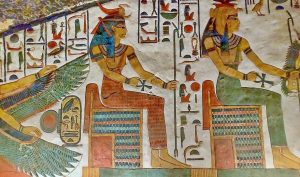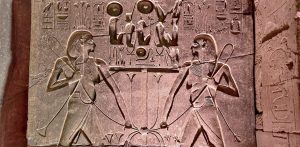There are several spots to visit in Egypt, some of which are well-known, some of which are touristic, and others which are off-the-beaten-path. However, Egypt, with everything that it has to offer in terms of culture, language, people, and history, is a magnificent and intriguing location that makes all of the attractions incredibly appealing, with an interesting tale behind each one. In this post, we will discuss Egypt’s top attractions, including those that are a must-see in every tourist city. Egypt’s top tourist attractions may be found in a variety of sites around the country. Having said that, you should be aware that Luxor alone is home to one-third of the world’s history.
The Best Tourist Attractions in Cairo

For centuries, Cairo has been known as the “city of wonders,” with its minarets and tower buildings, as well as amazing tourist attractions such as the pharaonic, Coptic, and Islamic sights in old Cairo, which have made it the most popular tourist destination in Egypt for travelers from around the world.
1. The Giza Pyramids are the most famous tourist attraction in Egypt.

The Giza Pyramids, the world’s most renowned ancient structures and one of the most visited tourist attractions of all time are situated on the Giza plateau, on the west bank of the Nile, on the Giza plateau. Among its many features are the nine Royal Pyramids of Khafre, Menquare, and Khufu, as well as their Queens. The Pyramids of Giza were constructed around 4,500 years ago. They are the royal tombs, each of which carries the name of the reigning king and was constructed during his time in power. Until the 17th century, the Pyramid of Khufu was the world’s most renowned and most magnificent structure, and it was the world’s tallest edifice for a period of time. The Pyramids of Giza are a must-see on every Egypt vacation, and no trip to Egypt is complete without seeing them. Historically, the pyramid represents a step in the evolution of tomb construction in ancient Egypt. Dahshur is also an important place to see since it is home to the Red Pyramid and Bent Pyramid, both of which should be included on any trip to the Saqqara region that includes the spectacular Step Pyramid of Saqqara.
2. The Great Sphinx

The Great Sphinx, a statue of a mythological figure known as the Sphinx with a lion’s body and a human head, is located on the Giza Plateau. It was carved from a single block of limestone and is thought to have been erected to resemble Pharaoh Khafre “2558-2532 B.C.” on the Giza plateau on the west bank of the Nile in Giza, Cairo.
3. The Egyptian Museum

The Egyptian Museum has a huge collection of Egyptian antiques, including some ancient Egyptian artifacts going back to ancient times, with over a hundred and twenty thousand pieces on exhibit. The Yuya and Thuya monuments, as well as their mummies, are included at the museum.
4. The Grand Egyptian Museum

The Grand Egyptian Museum is one of the world’s biggest and newest museums devoted completely to ancient Egypt’s history and culture. It is one of the best tourist attractions and it is the largest museum ever built in the world. It has a vast variety of facilities, entertainment centers, and exhibitions, including multiple ancient Egyptian antiquities totaling more than 150,000 that date back to Egypt’s various dynasties, as well as Pharaoh Tutankhamen’s whole collection.
5. The National Museum of Egyptian Civilization

The National Museum of Egyptian Civilization (NMEC) is a cultural and historical institution situated in the ancient city of El Fustat in old Cairo, Egypt’s first capital, overlooking Ain El Seera Lake, with the sole objective of shining light on Egypt’s ancient civilization, which stretched over 5000 years. The museum is expected to be an archaeological marvel, displaying 50,000 items spanning the Ancient Egyptian Civilization’s history from prehistoric through Pharaonic, Archaic, Greco-Roman, Medieval, Coptic, Islamic, and ultimately modern and current periods. The Royal Egyptian mummies’ ultimate resting place is the museum.
6. Islamic Cairo

Islamic Cairo is a fascinating area known as Medieval Cairo, which revolves around the Citadel of Cairo and provides a thorough glimpse into the historical and cultural legacy of Islam throughout its early stages. It was designated as a UNESCO World Heritage Site in 1979 for being the new center of the Islamic world, reaching its golden age in the 14th century and one of the world’s oldest Islamic cities, with famous mosques, madrasas, hammams, and fountains such as Ibn Tulan Mosque, Sultan Hasan Mosque, The Legendary Cairo Citadel of Salah El-Din, Al-Azhar Mosque, and many others.
7. Coptic Cairo

A fascinating area that encompasses all three Ibrahimic faiths. The oldest Christian church, the oldest synagogue, and the oldest mosque are all found in Coptic Cairo. The area concentrates on Coptic monuments, including a Coptic museum, as well as a number of Christian churches ranging in age from 500 to 1500 years. Coptic Cairo is a must-see sight in Cairo.
8. Khan El-Khalili Bazaar
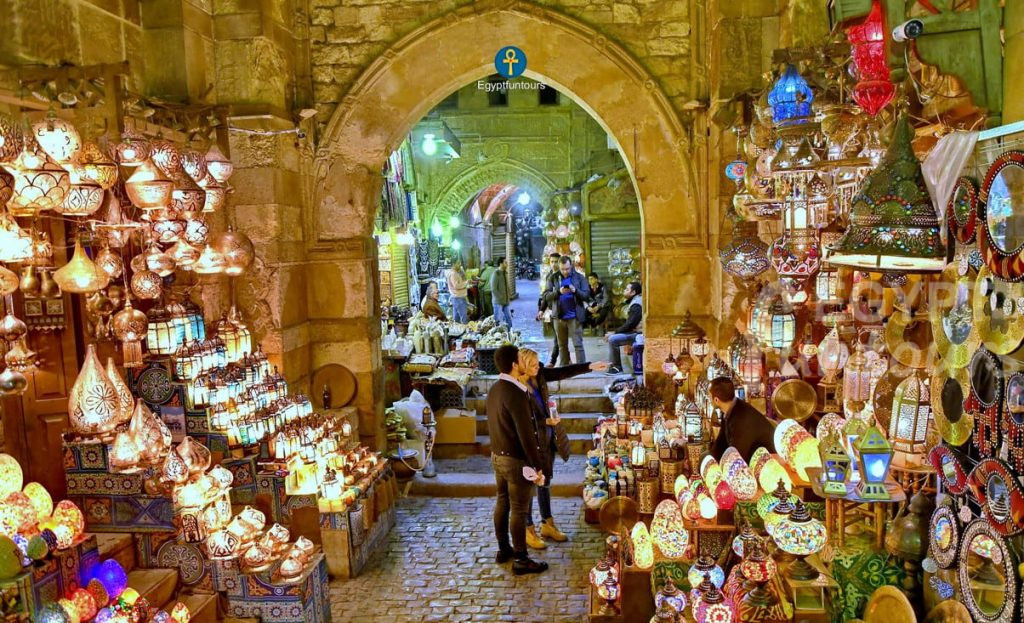
This enchanting market, which dates all the way back to the 14th century, is a maze of golden art and beauty. Tourists may buy anything they like as souvenirs from Khan El Khalili, one of the most recognized landmarks in old Cairo, which is characterized by the presence of exquisite copper, wood, and other materials handicrafts.
9. Saqqara Pyramids

With 18 pyramids and one museum, Saqqara is the biggest ancient Egyptian site. The primary feature of Saqqara is King Djoser’s step pyramid complex. Imhotep Museum is a small, intimate museum dedicated to the great architect Imhotep, who constructed Egypt’s first pyramid. With Saqqara, there lies the most magnificent interior of an Egyptian Pyramid, fully covered in hieroglyphic writings dubbed “The Pyramid Text.” Without a doubt, Saqqara is a must-see sight in Cairo.
10. Memphis

Memphis is the world’s largest ancient capital city, having been built more than 5000 years ago. It previously housed eleven colossal temples devoted to various ancient Egyptian gods. Memphis was the capital city of the ancient Egyptian Kingdom and remained a significant metropolis throughout Ancient Egypt’s history. In Memphis, there is a modest open-air museum that includes King Ramses II’s colossus as well as Egypt’s second-biggest Sphinx.
The Best Tourist Attractions in Alexandria
1. The Catacombs of Kom Esh Shokafa

Excavations at Kom Esh-ShoKafa started in 1892, but no catacombs were found until September 28, 1900. A donkey pulling a cart accidentally fell through a hole in the dirt and into one of the graves. The tale is still repeated to tourists! Mister Es-Sayed Aly Gibarah, an Alexandrian stone miner, uncovered the real thing. The 2nd century AD Kom el-Shuqafa. The catacombs are Egypt’s most renowned Roman burial place, constructed to bury 300 notables. After the subsoil water was removed in 1995, the public could visit Kom Esh-Shokafa. The catacombs are three floors deep in solid rock. A rope dropped the dead down the spiral staircase’s well Two semicircular niches have seats carved into the domed top part. On the other side is an eight-pillared domed kiosk with a central well.
2. The Roman Amphitheater

When construction of new homes began, a small Roman theatre was unearthed under the Kom el-Dikka (“Mound of Rubbles”). The site is now a Greco-Roman archaeological park. Many Roman villas and a Ptolemaic temple surround the theatre. The Villa of the Birds excavation discovered 3rd-century mosaic flooring. Horrya, Nabi Daniel, Abdel Moneim, and Saphia Zaghloul Streets surround the Roman Amphitheatre. Alexandrian symbolism. “Double theatre” is how the vast and spectacular amphitheaters were named. Open-air semi-circular theatres with no stage curtains. This little, damaged Roman theatre in Egypt is an intriguing historical site from the Roman period. The theatre also has substandard galleries. Above the Roman road were two other sites. Slums and a Muslim cemetery Second-century Roman theatre with 42m auditorium. The theater’s façade may have had multi-leveled columns. The big theatre was renovated to 33.5 m in diameter. 16 rows of marble chairs followed.
3. Pompey’s Pillar

The pillar is Alexandria’s tallest ancient monument. It rises from the remnants of an old secretion (temple of Serapis). This 28m red Aswan granite column with a Corinthian capital stands on a partially destroyed substructure. It was built in 292 A.D. to commemorate Emperor Diocletian, who fed the famished inhabitants following the city’s siege. This column was built by Posthumous, governor of Alex, as a thank you to the lovely emperor Diocletian. Crusades dubbed this column Pompey’s Pillar.
4. Abul Abbas Mosque

The El-Mursi Abul-Abbas Mosque in Alexandria is a well-known mosque dedicated to el-Mursi Abul Abbas, an Alexandrine Sufi saint. The El-Morsy Abul-Abbas Mosque was built in 1775 by Algerian Sheikh Abu-El-Hassan El-Maghraby over the grave of Ahmed Abu al-Abbas al-Mursi (Abu’l ‘Abbas), a pious Sufi who joined and headed the Shadhali brotherhood in the 13th century. He was born in the year 1219 in the Spanish city of Murcia.
5. The Fortress of Qaitbay

Among the most prominent defensive strongholds in Egypt and along the Mediterranean coast is Qaitbay Fort in Alexandria. It became an essential feature of Alex’s 15th-century fortification system. In 1480, the Mameluk Sultan Al-Ashraf Qaitbay reinforced the site as part of his coastal defenses against the Turkish invasion. He erected a palace with a mosque within. The fortress survived the Mameluke, Ottoman, and contemporary periods. But the British bombardment of Alex City in 1883 kept it hidden. The Egyptian Supreme Council of Antiquities renovated it multiple times in the twentieth century. The fort was erected on Faros Island, which had an old lighthouse. The four-story lighthouse was one of the ancient world’s seven marvels. The lighthouse stones were utilized to create part of the fort.
6. Bibliotheca Alexandrina (Library)

Most visitors to Alexandria start with the modernized Great Library. The Bibliotheca Alexandrina is a cultural center and a contemporary landmark in Alexandria. It boasts one of the world’s most ambitious libraries, as well as museums devoted to Alexandria’s history and heritage. Its design is based on a massive sun disc that spans the Corniche. Inside the main library and reading area are eight million volumes. Tourists come to see the well-arranged display halls under the main library.
The Best Tourist Attractions in Luxor
1. Karnak Holy Temple Complex

One of the best tourist attractions in Egypt, the Karnak Temple in Luxor is the world’s biggest temple complex, with so many parts and sizes that each section was built by a separate king of the new Egyptian Kingdom. The temple’s earliest section goes back to the reign of King Mentohotep NebhepetRa, the founder of the Middle Egyptian kingdom. He was the 9th king of his dynasty, although he is regarded as the founder of a kingdom since he unified Egypt’s two regions into one nation (2061 BC – 2010 BC).
2. Luxor Temple
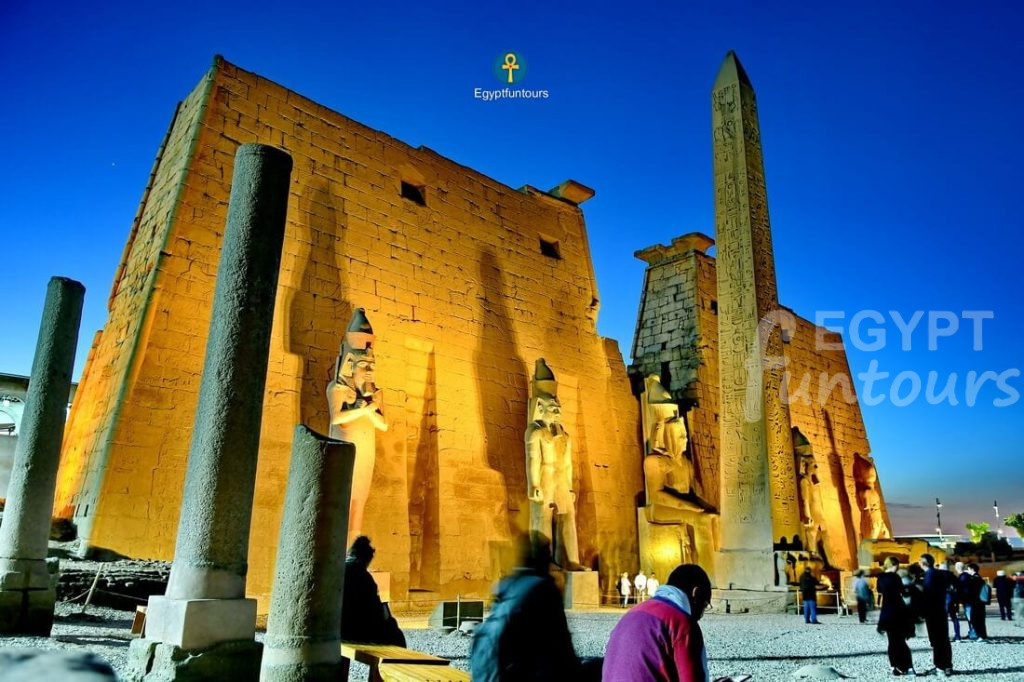
Luxor Temple is one of ancient Egypt’s most stunning temples. The temple was built by King Amenhotep III of the 18th dynasty. Some archaeologists think that the earliest component of the temple goes back to the period of king Mentohotep, the Middle Kingdom’s founder. The ancient monarchs seem to have undertaken a long-term building strategy to complete the temple over centuries rather than decades. King Amenhotep III constructed the sanctuary, hypostyle hall, and colonnade.
3. Valley of the Kings

4. Valley of the Queens

On Luxor’s west bank, the Valley of the Queens has 78 tombs of Egyptian queens from the 18th, 19th, and 20th dynasties. The tomb of Queen Nefertari, King Ramses II’s wife, is the most famous and gorgeous tomb ever discovered from ancient Egypt.
5. The Mortuary Temple of Queen Hatshepsut

Hatshepsut (c.1473–1458 BC) built a splendid temple at Deir al-Bahari on the west bank of Luxor. It’s across the Nile from Amun’s main sanctuary, Karnak. Senenmut, Amun’s chief steward, built Hatshepsut’s temple, Djeser-djeseru. The temple has three stories, each with a colonnade. A courtyard opens out beyond the portico on the upper level. Hatshepsut as Osiris, the god of the dead, leans on the pillar. On the temple, walls are painted reliefs depicting temple ceremonies, festivals, and even the journey of obelisks from the quarry to Karnak Temple. On the opposite side of the portico, Hatshepsut justifies her legitimacy. She does so by claiming that her real father was none other than Amun himself and that Thutmose I chose her as his successor.
6. Dendera Temple Complex

The Temple lies 4 km from the Nile’s west bank, opposite Qena. Qena (population 2,000,000) is both a Coptic and Muslim city. Arabic water pots, or “Qula” jars, are made in this area. In the century A.D Ptolemy VIII and Cleopatra II built the Temple of Hathor, it is one of Egypt’s finest preserved temples! Emperors adorned it to honor Hathor, the goddess of childbirth, love, and music. Hathor was known to the Greeks as Aphrodite.
7. Abydos Temple

The Abydos Temple is one of the most important temples in history since it includes crucial proof of ancient Egyptian beliefs and ideas about the deity Osiris, his wife goddess Isis, and their son Horus! The essence of the God Osiris myth was incorporated into the account of Jesus’ birth from a virgin mother without a physical father.
The Best Tourist Attractions in Aswan
1. The Temple of Philae
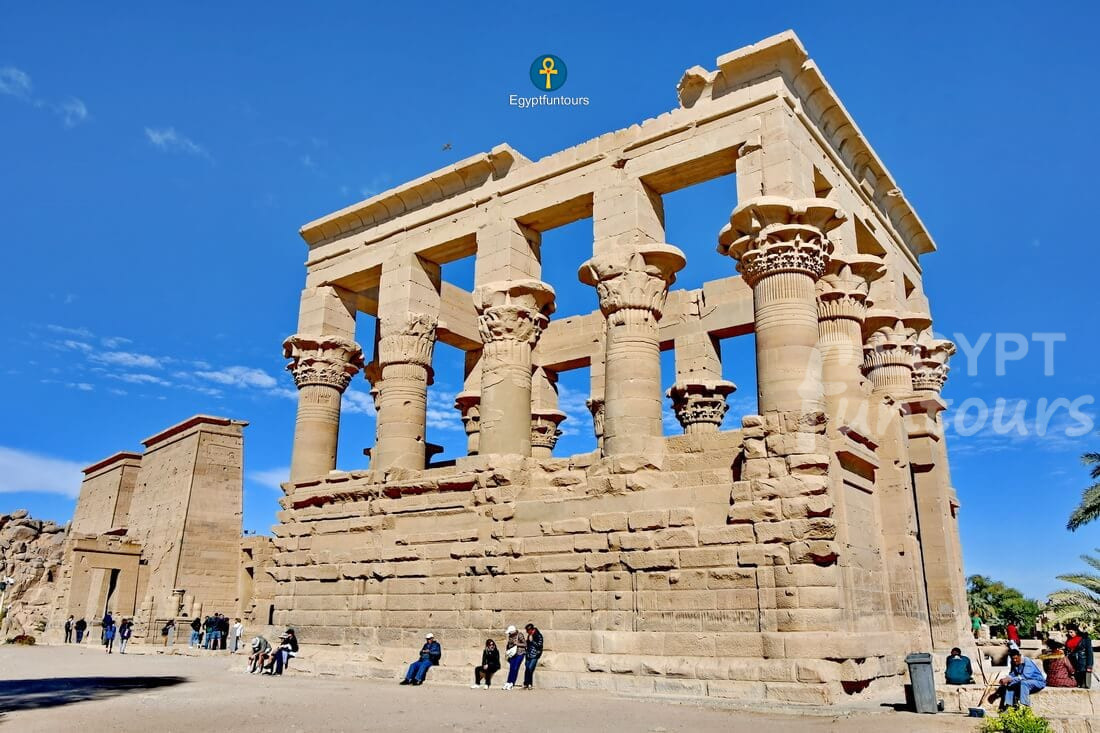
The Temples of Philae, Egypt’s historic hub for the Isis worship, were revered from the Pharaonic era through the Greek, Roman, and Byzantine eras, with each ruler adding its own modifications to the stones. Since the first Nile cruises left Cairo, this holy location has enchanted visitors and is one of Nubia’s most prominent monument sites.
2. The Temples of Abu Simbel

The Abu Simbel temples are two huge rock structures on the western side of Lake Nasser, around 230 kilometers (140 miles) southwest of Aswan (about 300 kilometers (190 miles) by vehicle). The complex is part of the “Nubian Monuments” UNESCO World Heritage Site, which stretches from Abu Simbel to Philae (near Aswan). The twin temples were cut out of the rock in the 13th century BC, during the reign of King Ramesses II of the 19th dynasty. They celebrate the king’s triumph in the Battle of Kadesh and serve as a permanent memorial to him and his queen, Nefertari. Their massive rock relief figures on the outside have become legendary.
3. Elephantine Island

Elephantine Island, Aswan’s top tourist spot, is dotted with palm tree plantations and sloping communities of colorful mud-brick houses. At its southern end are the Aswan Museum and the Ruins of Abu, Aswan’s most ancient village, which contains the Old Kingdom Temple of Khnum and the Temple of Satet.
4. The Nubian Museum

The Nubian Museum in Aswan is one of Egypt’s greatest and a must-see for anybody interested in ancient and modern Nubia’s history and culture. It records the treasures of a civilization that was nearly wiped out by the construction of the Aswan Dam and the creation of Lake Nasser.
5. The Temple of Kom Ombo

Kom Ombo It is rare in that it is devoted to two gods, Horus and Sobek, and is located on the banks of the Nile about 23 miles north of Aswan. Sobek was the Nile’s crocodile deity of fertility, and the river’s bend here originally housed a great number of Nile crocodiles, which were revered. In the temple’s modest chapel of Hathor, there is a small collection of mummified crocodiles. Thankfully, the live crocodiles have vanished! To accommodate the two gods, the temple has two of everything, and among the reliefs on the walls – mostly from the late-era and Roman period – are depicted a set of medical tools.
6. The Temple of Edfu

Edfu is a tiny settlement on the west bank of the Nile River, halfway between Esna and Aswan, with a population of about 60,000 people. Edfu is the site of the Ptolemaic Temple of Horus and an ancient hamlet. It is most known for the massive Ptolemaic temple, which was erected between 237 BCE and 57 BCE during Cleopatra VII’s reign. The Temple of Horus at Edfu is the best preserved of all the temple ruins in Egypt. The massive Ptolemaic temple was built from sandstone blocks over the site of a smaller New Kingdom temple, positioned east to west and facing the river. The later construction faces north to south, leaving the ruins of the ancient temple pylon visible on the first court’s east side.
7. The Unfinished Obelisk

The unfinished obelisk in Aswan is a must-see, situated in one of the historic reddish granite quarries where the ancient Egyptians quarried stone for obelisks. The location itself is beautiful due to the old cutting stone traces and the opportunity to imagine the process of making an obelisk. The Pharaohs left the obelisk incomplete owing to fractures that emerged during the carving procedure. There are no cartouches or ancient hieroglyphics on the left obelisk, but researchers believe it dates back to Queen Hatshepsut’s period since she built the greatest obelisk at Luxor’s Karnak temples. An obelisk is a single block of granite carved from the bedrock and transported to a temple. Cutting an obelisk is as difficult as transplanting it. In the first step, a precise outline is created with a width of at least 75 cm up to one meter and as deep as the needed width of the obelisk itself. This breadth of the outline allows a worker to continue excavating underneath the obelisk. Then the water was injected into the cylinder drilling to widen it and make the pre-digging fractures simpler. The obelisk’s bottom side is the last to be finished after the other three.
The Best Tourist Attractions in Fayoum
1. Lake Qarun

Lake Qarun, located 80 kilometers southwest of Cairo in Egypt’s Fayoum district of the Nile Valley, is a cherished natural wonder and a resource that has assisted human civilization for over 8,000 years. It is the only natural contemporary lake of any magnitude in Middle Egypt. As a result, it is rich in natural as well as archaeological resources.
2. Wadi El Rayan National Park

Wadi El Rayan is a well-known nature reserve in Egypt, located less than two hours from Cairo. The natural reserve is named after King El Rayan Ibn El Walid, who resided in the region with his warriors and is located in the El Fayoum governorate about 75 kilometers from El Fayoum city.
3. Wadi El Hitan National Park

Do you believe that viewing 6000-year-old tombs and temples is like stepping back in time? Visit Wadi El Hitan National Protectorate to see 40-million-year-old whales! Wadi Al-Hitan is a UNESCO World Heritage Site 150 miles southwest of Cairo that preserves vestiges of the ancient Tethys Sea when Egypt was inundated and sea cows, crocodiles, and turtles swam. However, it is most renowned for revealing information about whale evolution.
4. Tunis Village

The Tunis Village was founded in the 1960s by two well-known Egyptian poets who encouraged locals to become artists, but it is now better known for the arrival in the 1980s of Evelyne Porret, a Swiss woman and potter who opened her own pottery studio with her husband and quickly transformed it into a pottery school to teach all the local children how to make pottery items and encourage them to become budding potters. It still exists today, with all of the village’s children employed as potters to support their families.
5. The Magic Lake

In the governorate of Fayoum, the Wadi El Rayan protectorate features the mystical lake. It’s a little natural lake surrounded on two sides by a massive mountain and on the other by wide, desolate dunes. It’s known as the enchanted lake because the color of the water varies throughout the day based on the time of day and the quantity of sunlight. The lake offers both swimming and camping opportunities. While sitting by the lake and soaking in the scenery, also gives a fantastic opportunity to snap stunning images.
6. Qatrani Mountain is among the Tourist Attractions

To the north of Lake Qarun, Qatrani is a low-lying mountain. It is on the UNESCO Tentative List in the Mixed category (date of submission: 10/02/2003). Medinat Madi, Qasr Qarun, and Qas El Sagha are just a few of the ancient sites in the vicinity. There is also a lovely campground named “Qatrani Camp” where visitors may stay and enjoy the night sky. Hikers, visitors, and stargazers flock to the 350-meter-high peak, which is a popular location for hikers, visitors, and stargazers.
The Best Tourist Attractions in Sinai and the Red Sea
Sinia’s natural beauty and Red Sea resorts are modernly furnished with superb amenities and easy access to heavenly natural attractions like multicolored coral and unusual fish that dwell under the magnificent red sea’s waves.
Sharm El Sheikh is one of the best tourist attractions in Egypt.
The Red Sea Coral and marine life may be readily explored and enjoyed from the beautiful resort of Sharm El Sheikh, which is nestled between the Sinai Peninsula’s desert and the Red Sea and is home to some of the world’s most stunning coral reefs. Sharm el-Sheik, which is made up of three lovely bays, is a diving and watersports paradise where you can also visit Saint Catherine’s Monastery. One of the most beautiful spots in the Red Sea. The Sherm El Sheik resort at Naama Bay is the primary attraction. It is a cosmopolitan, elegant resort with several bars and terraced cafés, as well as a variety of diving opportunities, including the Ras Mohammed National Park, which is home to Shark Reef.
The Sinai Desert
The Sinai Desert is part of Egypt’s Sinai Peninsula, which is situated in the country’s northeastern corner. Flat, undulating plains to the north and mountains to the south characterize this dry peninsula. Between the Red Sea and the Mediterranean Sea, it has the Sharm el-Sheikh resort on its southern point, which is a diving and snorkeling base for the reefs of Ras Mohammed National Park.
The Eastern Sahara
The eastern Sahara is situated east of the Nile River, between the Red Sea and the Nile, and stretches from Egypt in the north to Eritrea in the south, including sections of Ethiopia and Sudan. The Arabian Desert, also known as the Eastern Desert, is noted for its volcanic-rock mountains that extend along the Red Sea Coast and were produced around three billion years ago. It stretches from south-east Egypt into north-eastern Sudan, and from the Nile River valley eastwards to the Gulf of Suez and the Red Sea, spanning 85,690 square miles, or roughly 21% of Egypt’s total surface area. The eastern desert, often known as the Red Sea Hills or the Arabian Desert, is home to the most diverse array of natural attractions and preserves around the magnificent Red Sea Riveria.
Hurghada is one of the best tourist attractions in Egypt
Being one of Egypt’s tourist attractions, Hurghada is considered to be the greatest location for a tropical holiday on the red sea’s waves. It’s a beautiful beach resort town that stretches for 40 kilometers along Egypt’s Red Sea coast. Swimming with dolphins, riding a semi-submarine plus a great safari to the eastern desert to the Bedouin community, visiting the Hurghada large aquarium, and many more aquatic activities are available. Sheduan Island, Abu Minqar Island, Dishet El-Dhaba, Marsa Abu Galawa “Carless Reef,” El Fanus “Dolhin Reef,” Turtle Bay, Oberoi House Reef, Gota Abu Ramada a.k.a. “The Aquarium,” Gota Abu Makadi, Gifton Island, and some inner Hurghada resorts such as the Sahl Hasheesh, El Quseir, Sunrise City Resort, Makadi Bay, Cleopatra Luxury Resort, Soma Bay, Sharm El Naga, El Gouna, and more.
Monastery of Saint Catherine
Saint Catherine’s Monastery is one of the world’s oldest continuously operating monastic communities. The Byzantine emperor Justinian I built this UNESCO World Heritage Site in 527 AD around the chapel of the burning bush, which became a center of sanctuary and pilgrimage throughout the Middle Ages in the 6th century. The Sacred Monastery of the God-Traveled Mount Sinai and The Monastery of the Transfiguration was its original names, but it eventually became associated with St. Catherine of Alexandria. Catherine’s Monastery became a prominent pilgrimage site throughout the Byzantine era, and it continues to be so today.
Discover the Best Tourist Attractions in Egypt
Our Egypt private trips will take you into the old Pharaoh’s realm, a world of towering temples, intriguing mummies, beautiful felucca sailboats, and exotic bazaars. Take a tour of Cairo’s outskirts with a certified Egyptologist guide.
The jewels of King Tutankhamun are among the fascinating exhibits on display at the Grand Egyptian Museum. Then take a luxury Nile River cruise between Luxor and Aswan to see some of the most stunning scenery on the Nile’s banks, including gorgeous palms, banks, and amazing contemporary and antique architecture.
Make amazing moments by taking one of Egypt Deluxe Tours:




